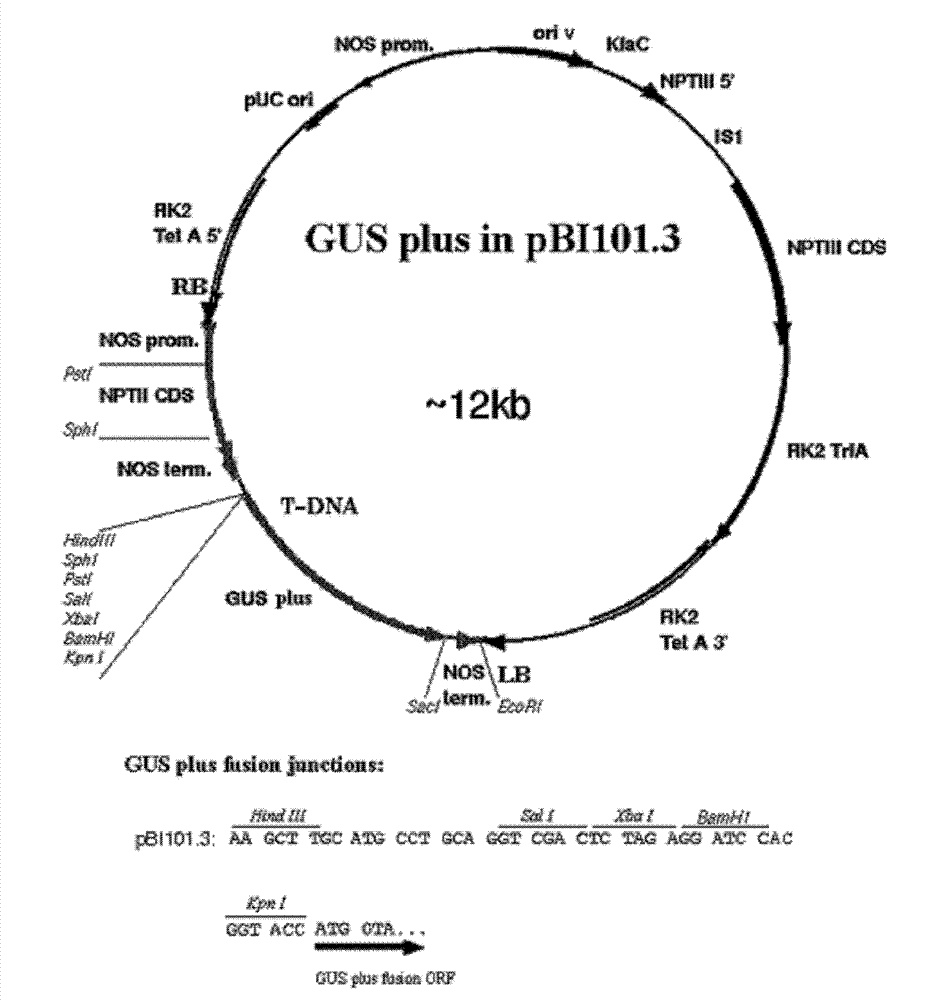Promoter of oryza sativa rice root tip specific 3 (OsRTS3) expression gene and application thereof
A technology for expressing genes and rice roots, which is applied in the field of plant genetic engineering, can solve the problems of abnormal species morphology and physiological functions, few types of crops, and no intellectual property rights, etc., and achieve the effect of large technical reserve value
- Summary
- Abstract
- Description
- Claims
- Application Information
AI Technical Summary
Problems solved by technology
Method used
Image
Examples
Embodiment 1
[0019] According to related research, it is known that OsRTS3 may be a gene specifically expressed in root tip tissue. Design specific primers according to the upstream sequence of the OsRTS3 gene coding region, and use the genomic DNA of wild-type Nipponbare as a template to amplify the OsRTS3 gene promoter of full length 2607bp, its nucleotide sequence is shown in SEQ ID NO: 1 (i.e. as shown in described in the sequence listing).
[0020] The primer sequences are as follows:
[0021] Upstream primer: AGGCCGAAAGACTAAGAGTTGAG
[0022] Downstream primer: ATACCATGGAACGGCTGCATAACTAA
[0023] The extraction method of the genomic DNA of wild-type Nipponbare is:
[0024] The leaves of the wild-type rice variety Nipponbare were cooled and ground with liquid nitrogen, and the genomic DNA was extracted by the CTAB method. The specific process is as follows:
[0025] 1) Add 2-ME / CTAB preheated at 65°C to the pulverized tissue, mix to make it fully wet, incubate at 65°C for 10-60min,...
Embodiment 2
[0053] Mature rice seeds were dehulled and sterilized, placed on mature embryo induction medium, and cultured in a light incubator at 28°C for 3 weeks. Embryogenic callus tissue that split naturally (light yellow, compact and spherical) was picked, placed in a subculture medium, and subcultured in a light incubator at 28°C to obtain rice callus. Rice calluses were infected with Agrobacterium transformed with OsRTS3P-GUSplus plasmid, co-cultured, and selected on the medium containing G418 antibiotic. The callus capable of normal growth is differentiated, rooted, seedling-trained and transplanted to obtain transgenic plants and transgenic plants. The rice genetic transformation system mediated by Agrobacterium (EHA105) was optimized based on the method reported by Hiei et al. (1994). The offspring of transgenic seedlings obtained after staining with GUS staining solution image 3 shown.
[0054] It indicated that GUS driven by the OsRTS3 gene promoter was specifically express...
PUM
 Login to View More
Login to View More Abstract
Description
Claims
Application Information
 Login to View More
Login to View More - Generate Ideas
- Intellectual Property
- Life Sciences
- Materials
- Tech Scout
- Unparalleled Data Quality
- Higher Quality Content
- 60% Fewer Hallucinations
Browse by: Latest US Patents, China's latest patents, Technical Efficacy Thesaurus, Application Domain, Technology Topic, Popular Technical Reports.
© 2025 PatSnap. All rights reserved.Legal|Privacy policy|Modern Slavery Act Transparency Statement|Sitemap|About US| Contact US: help@patsnap.com



